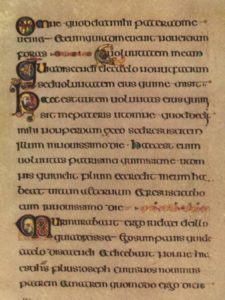Day: 39 Km Travelled: 421.3 km Steps: 13 175 Location: Dublin, Ireland
October 18th, 2017
After a magical time in Scotland, I was highly anticipating my stay in the Emerald Isle and its capital was the perfect place to start!
 The River Liffey was once the north-south division of the city; the Northside was generally seen as working class to lower middle class, while the Southside was seen as middle class to upper-middle class.
The River Liffey was once the north-south division of the city; the Northside was generally seen as working class to lower middle class, while the Southside was seen as middle class to upper-middle class.
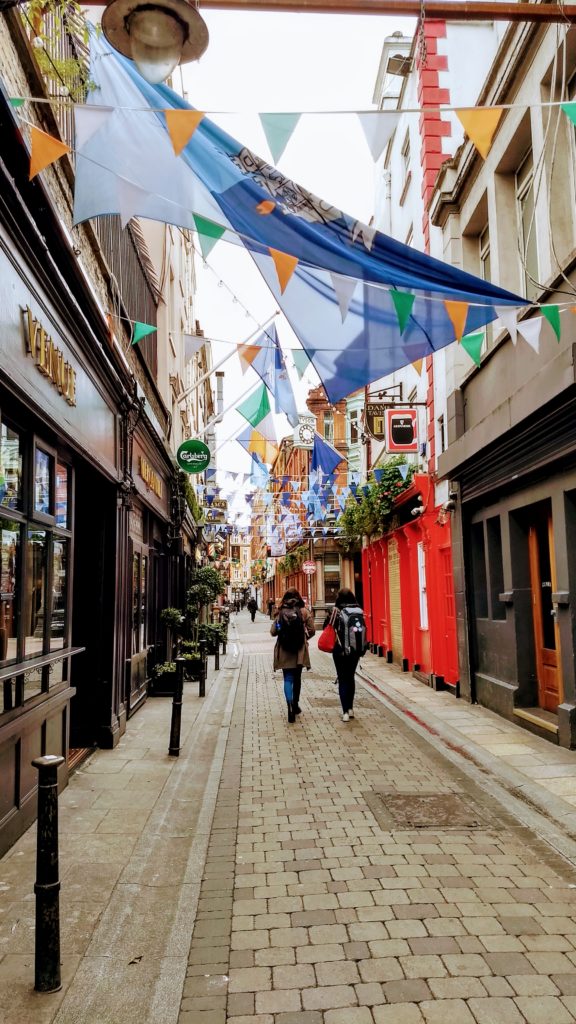 Dublin is Ireland’s largest city, situated at the mouth of the River Liffey and bordered by the Wicklow Mountains to the south. The agglomerated city counts almost 2 million inhabitants. The city proper was founded in 988AD by Vikings although evidence suggests that the area has had human inhabitants since at least 140AD. It became a part of the U.K. in 1800 until Irish independence was achieved in 1916.
Dublin is Ireland’s largest city, situated at the mouth of the River Liffey and bordered by the Wicklow Mountains to the south. The agglomerated city counts almost 2 million inhabitants. The city proper was founded in 988AD by Vikings although evidence suggests that the area has had human inhabitants since at least 140AD. It became a part of the U.K. in 1800 until Irish independence was achieved in 1916.
Dublin is a vibrant, modern city. It is amongst the top thirties cities in the world, known as a historical and contemporary centre for education, art, administration, economy & industry (and beer, let’s not forget that).
The city has much to offer and despite the rain, i tried to make the most of my stay. Interestingly enough, Dublin is Ireland’s driest city……ha!
Of the many different areas in the city, only a few have retained their medieval character, Temple Bar being one of them. It is considered Dublin’s cultural quarter, on the south bank of the River Liffey. Once the centre of prostitution in the city, it is now a popular tourist spot, especially known for its lively nightlife.
 Temple Bar Pub, in the Temple Bar district
Temple Bar Pub, in the Temple Bar district
 🎵 In Dublin’s fair city / Where the girls are so pretty…🎵
🎵 In Dublin’s fair city / Where the girls are so pretty…🎵
So begins Dublin’s (unofficial) anthem. The song is so popular amongst the locals that it inspired a statue and a national day in honour of its heroine, Molly Malone.

The lighting is very dim in order to preserve the volumes; hence the so-so picture
 Nestled amongst the ancient manuscripts is a nondescript glass case containing of one of the last remaining copies of the 1916 Proclamation of the Irish Republic. This proclamation was read near the General Post Office on April 24th, 1916. It was the start of the Easter Rising. Launched by Irish republicans in an effort to end British rule in Ireland, it was an armed insurrection during Easter Week 1916. Convinced that the time was right as the British were preoccupied with the First World War, the rebels seized several key locations across the city. The response of the British government was to mobilize thousands of troops as well as artillery and a gunboat. During the six days that ensued, 485 people were killed (54% were civilians, 30% were British military and police, and 16% were Irish rebels) and more than two thousand wounded. The leaders of the rising surrendered and more than 3 500 people were arrested, many of whom played no part in this saga. 1800 of those imprisoned were sent to British internment camps to carry out their sentences. As for the leaders, they were promptly executed by firing squad, with one of them, James Connolly, was executed while tied to a chair as he was unable to stand due to injuries sustained in the fighting. There was an increase in popular support for Irish Independence following what was perceived as Britain ‘s extreme reaction to the conflict.
Nestled amongst the ancient manuscripts is a nondescript glass case containing of one of the last remaining copies of the 1916 Proclamation of the Irish Republic. This proclamation was read near the General Post Office on April 24th, 1916. It was the start of the Easter Rising. Launched by Irish republicans in an effort to end British rule in Ireland, it was an armed insurrection during Easter Week 1916. Convinced that the time was right as the British were preoccupied with the First World War, the rebels seized several key locations across the city. The response of the British government was to mobilize thousands of troops as well as artillery and a gunboat. During the six days that ensued, 485 people were killed (54% were civilians, 30% were British military and police, and 16% were Irish rebels) and more than two thousand wounded. The leaders of the rising surrendered and more than 3 500 people were arrested, many of whom played no part in this saga. 1800 of those imprisoned were sent to British internment camps to carry out their sentences. As for the leaders, they were promptly executed by firing squad, with one of them, James Connolly, was executed while tied to a chair as he was unable to stand due to injuries sustained in the fighting. There was an increase in popular support for Irish Independence following what was perceived as Britain ‘s extreme reaction to the conflict.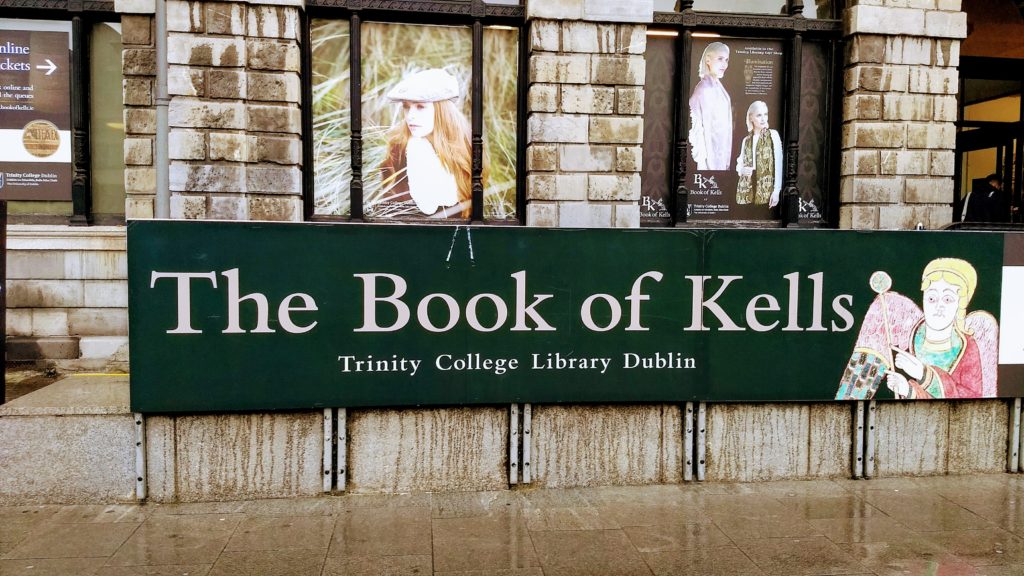
The Book of Kells is regarded as the world’s most famous and oldest book and Ireland’s most prized national treasure. Dating back to 800AD, it is an illustrated ( ‘ insular illumination’ as the style is called) manuscript created by Irish monks. It contains the four Gospels of the New Testament together with various prefatory texts and tables, written in Latin.
It is displayed in The Library of Trinity College, although only 2 of the 4 volumes are displayed at once, each one showing a major illustration and the other a typical text page. Sadly, photos are not allowed due to the sensitive nature of the artifact. However, Google saves the day:
Just click on the photos if you’re interested in seeing the electronic version of the Book

The Long Room also holds another treasure; the Brian Boru harp, one of the three surviving medieval Gaelic harps (and Ireland’s national symbol). It dates back to the 15th century and is made of oak and willow with 29 brass strings.
Another famous Dublin site is Dublin Castle. Following the Norman invasion of Ireland in 1169 (thus ending the Viking rule), the castle became the centre of Norman power in Ireland. It was founded in 1204 as a major defensive work on the orders of King John of England (yes that King john, the evil one from Robin Hood). Strong, thick stone walls and large ditches were constructed for the defence of the city.
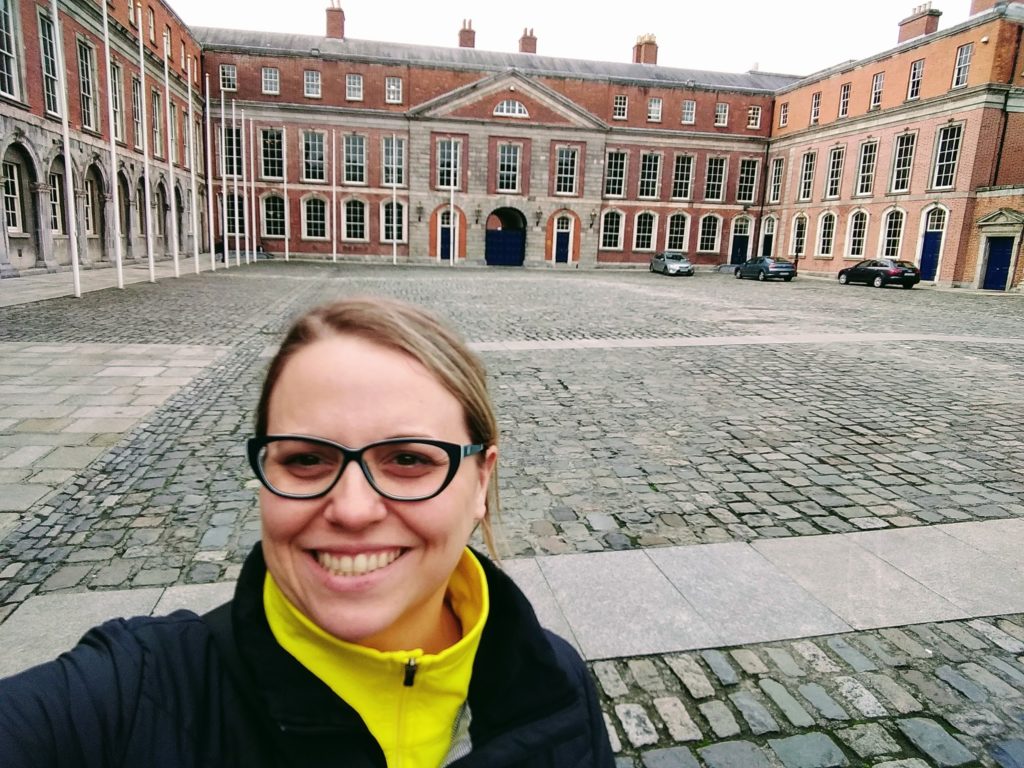 Can you tell how happy I am that it isn’t raining….yet!
Can you tell how happy I am that it isn’t raining….yet!
Under British rule, it was the seat of the government’s administration. Since Irish Independence in 1922, it is now a major Irish government complex. and many of the grand rooms used for formal state events.

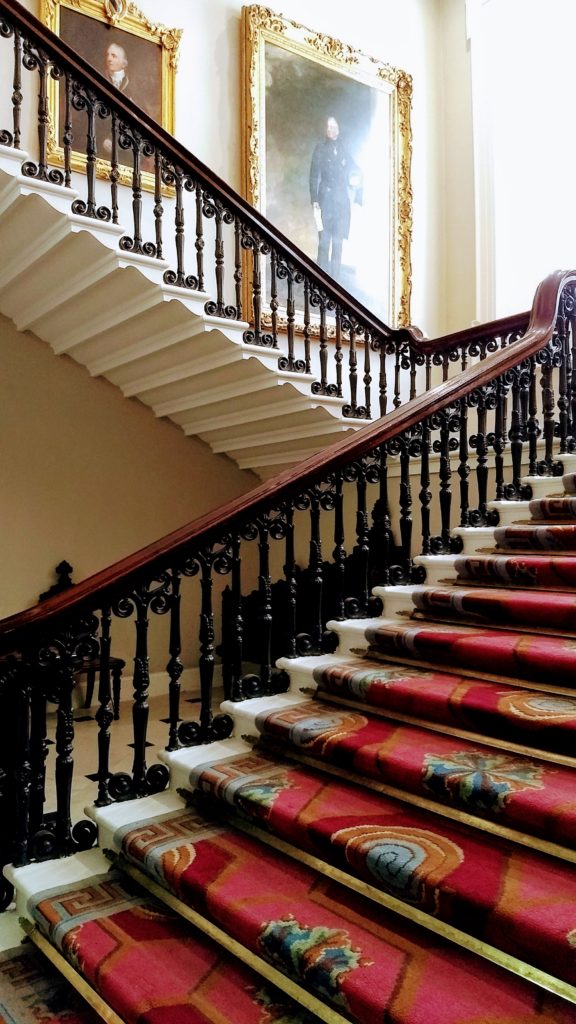 Most of it dates from the 18th century, though a castle has stood on the site since the days of King John. Ruins of the previous defensive walls can be seen under the castle grounds.
Most of it dates from the 18th century, though a castle has stood on the site since the days of King John. Ruins of the previous defensive walls can be seen under the castle grounds.
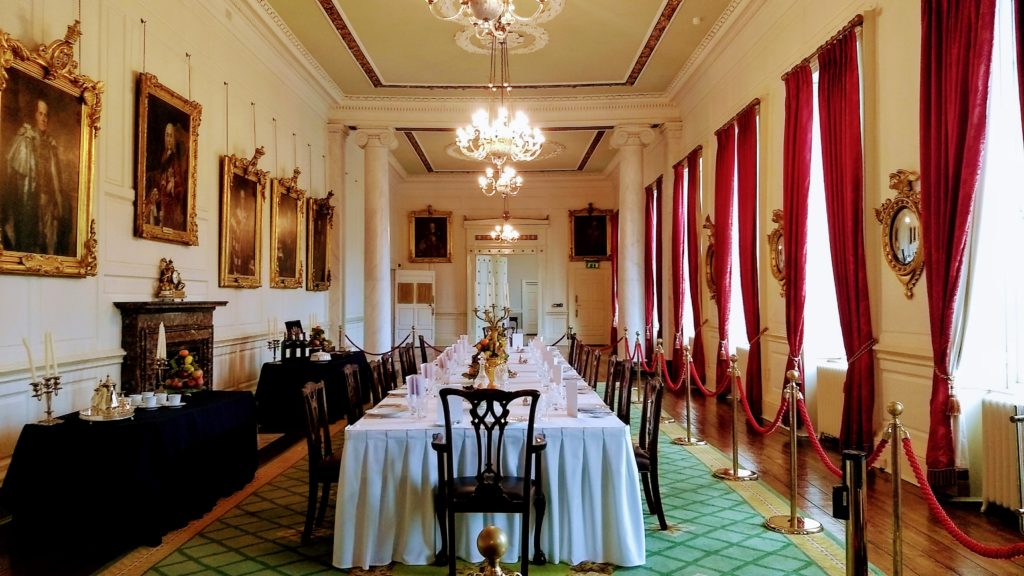 State Dining Room
State Dining Room
 State Drawing Room
State Drawing Room
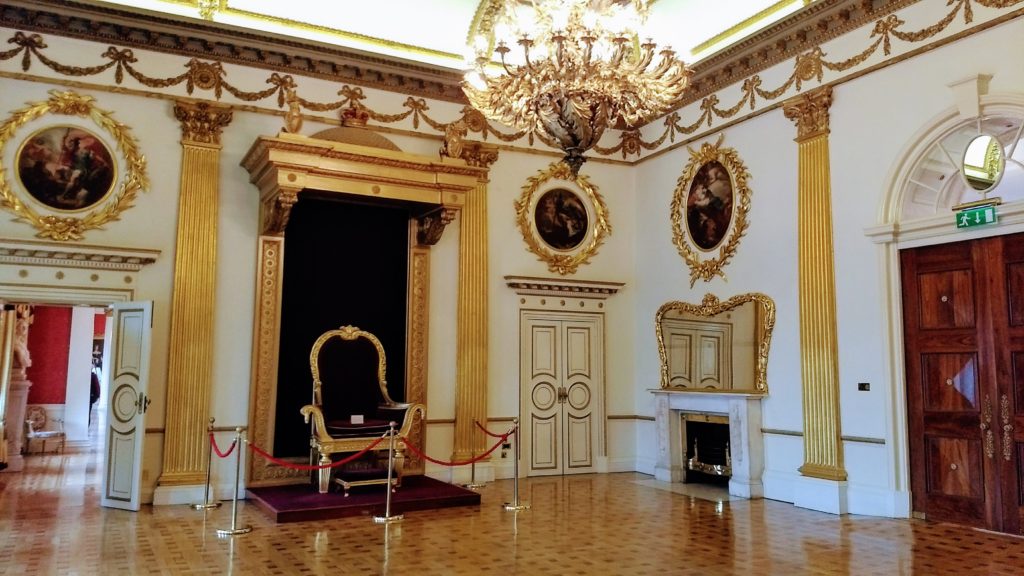 The Throne Room
The Throne Room
Guided tours are offered of the Castle and the ruins, which I highly recommend. And luckily for me, most visitors quickly left at the end of the tour which left me ample time by myself to wander through each room again and examine details more closely. Like, the photo of Queen Elizabeth II on the table!
The rest of my time in Dublin was spent exploring the city’s various neighbourhood and partaking in the local culture (while trying to update this blog!)…



